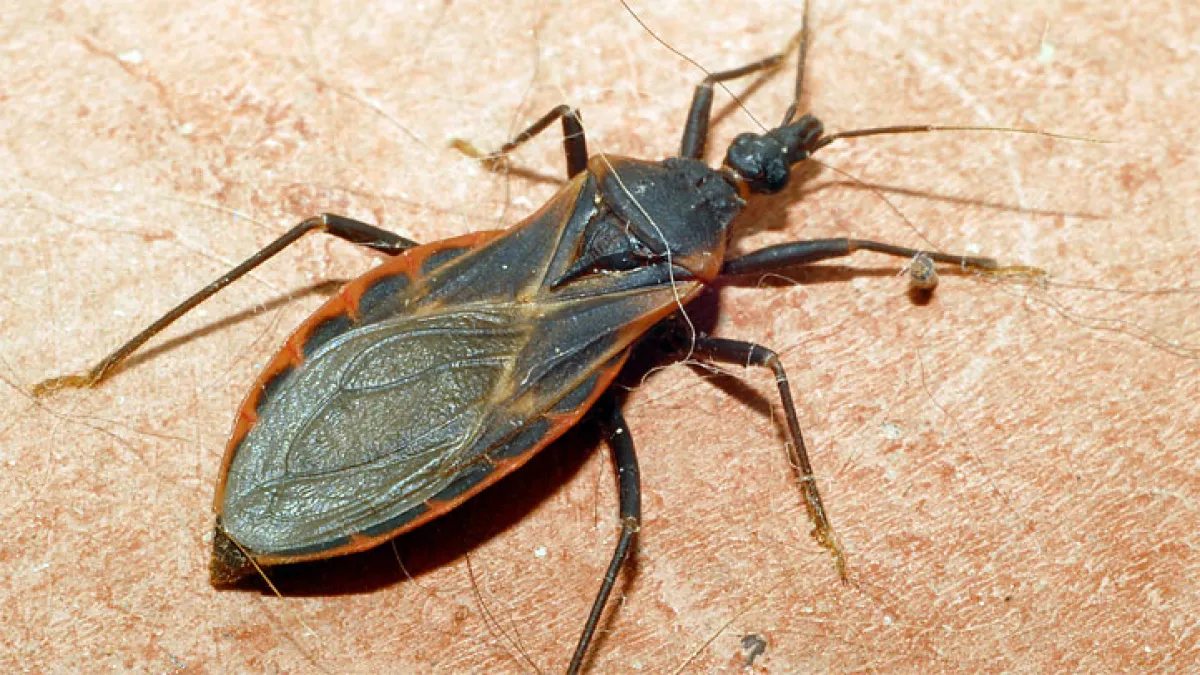
Are “kissing bugs,” the bugs that transmit a potentially deadly parasitic disease that has been spreading in the U.S., in Illinois?
A new report from the Centers for Disease Control and Prevention this month suggests there is growing evidence challenging the label of the U.S. as non-endemic.
So where are the bugs found, what is chagas disease and how worried should you be?
Here’s what to know:
What are “kissing bugs”?
“Kissing bugs,” also known as trypanosoma cruzi, are a parasite found in the feces of the triatomine insect. The insects hide in cracks in walls or ceilings during the day and come out at night to feed on blood, often biting people while they sleep.
They are often referred to as “kissing bugs” because they typically bite people’s faces.
What is Chagas disease?
Chagas disease is a disease caused by an infection from the feces of infected kissing bugs. It can infect humans who accidently rub the feces into open wounds, eyes, or mouths.
“When they feed, their infected droppings can get into bites, cuts, or mucous membranes,” the CDC reports.
Once in the human body, the parasites multiply and spread.
“A missed or late diagnosis with absent or incomplete treatment and follow-up can transform this infection into a life-threatening condition,” according to the World Health Organization.
The disease is most prominent in Latin America, though it infects more than 7 million people worldwide, leading to more than 10,000 deaths each year, WHO reports.
Where are “kissing bugs” found?
According to the CDC, the bugs are typically found in the southern United States, Mexico, Central America, and South America (as far south as southern Argentina).
Among the states where the bugs are found are Illinois, Missouri, Indiana, Ohio, Kentucky and more.
Eleven different species of triatomine bugs have been found in the U.S. so far, but the most recent CDC report found human infections identified in only eight states: California, Arizona, Texas, Tennessee, Louisiana, Missouri, Mississippi, and Arkansas.
“Those numbers likely greatly underrepresent underlying human infections,” the report notes.
What are the symptoms of Chagas disease?
Chagas disease does not always cause symptoms.
According to the Mayo Clinic, the parasite can cause a sudden and brief illness or it can become a long-lasting chronic condition. The CDC indicates that it has two stages.
Symptoms of the acute phase: The acute phase of Chagas disease can last weeks or months. If there are symptoms, they may include:
Swelling at the site of infection
Fever
Fatigue
Rash
Body ache
Swollen eyelid
Headache
Loss of appetite
Nausea, diarrhea, or vomiting
Swollen glands
Enlarged liver or spleen
If the infection is not treated, Chagas disease remains in the body and can progress to a chronic condition.
According to the Mayo Clinic, symptoms of the chronic phase may appear 10 to 20 years after the infection begins. In severe cases, symptoms of Chagas disease may include:
Symptoms of the chronic phase:



